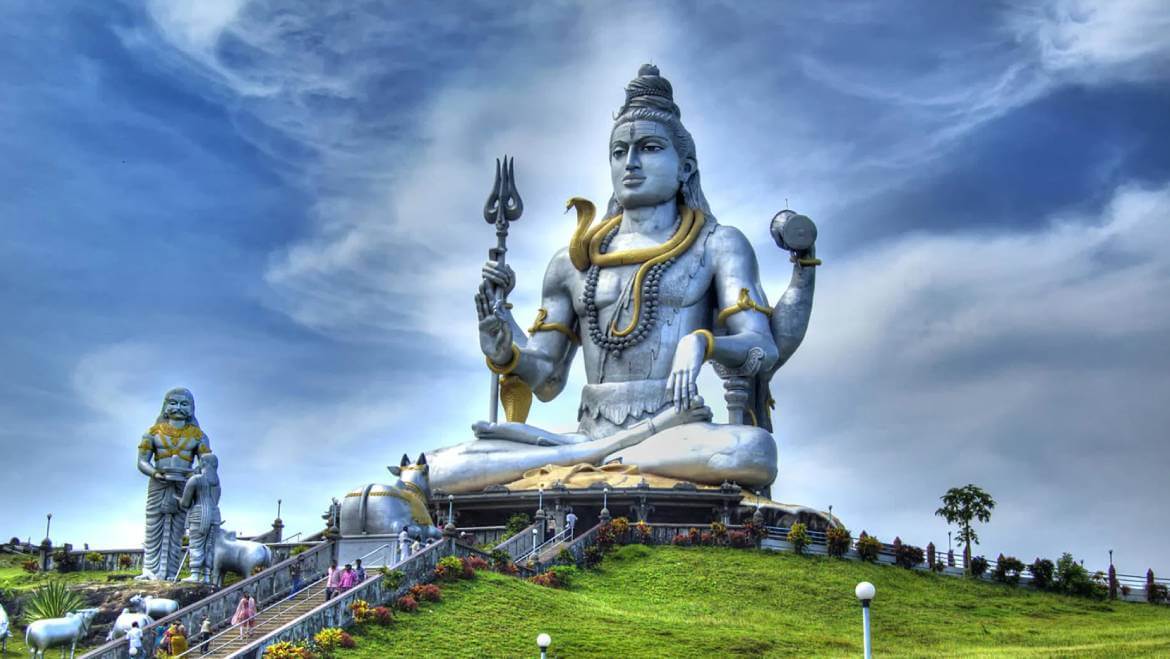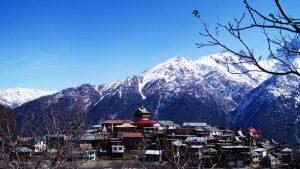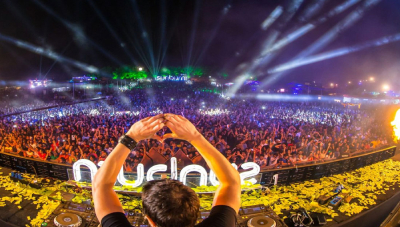Shiva, the supreme power according to the Hindu religious beliefs, has played an important role in the formation of Indian culture. Known as Shiva or Mahadeva in the northern part of the country and Thillai in South, the deity is considered among the three main energies behind the formation of this universe. Mostly represented in mythologies as a Yogi or a peaceful entity, Shiva is also described as a fierce deity in ancient religious scriptures in the form of a Bhairava or Nataraja. From Kashmir to Kanyakumari and Saurashtra to Assam, he has been worshipped in different forms as the destroyer of evils and rescuer of the innocents.
Also Check out: Popular Pilgrimage Tourism Packages in India
Various interesting myths and legends have been centred on the supremacy of Shiva resulting to the formation of famous pilgrimage circuits like Dwadasha Jyotirlinga (12 temples), Panch Kedar (5 temples) and Pancha Bhuta Sthalams (5 great elements) in different corners of the country. Around hundreds of temples are found in India which are particularly dedicated to Samhar Karta (Destroyer) Shiva.
This blog is here penned down to tell you about the most popular Shiva Temples in India which are not just a pick of religious souls but food for the thoughts of history buffs.
Here is a List of 30 Most Popular Lord Shiva Temples in India
- Kedarnath Temple, Uttarakhand
- Somnath Temple, Gujarat
- Mallikarjuna Swamy Temple, Andhra Pradesh
- Mahakaleshwar Mandir, Madhya Pradesh
- Omkareshwar Temple, Madhya Pradesh
- Bhimashankar Temple, Maharashtra
- Kashi Vishwanath Mandir, Uttar Pradesh
- Trimbakeshwar Temple, Maharashtra
- Vaidyanath Mandir Deoghar, Jharkhand
- Nageshwar Temple Dwarka, Gujarat
- Ramanathaswamy Temple, Tamil Nadu
- Grishneshwar Temple, Maharashtra
- Amarnath Temple, Jammu & Kashmir
- Brihadeswarar Temple, Tamil Nadu
- Shore Temple, Tamil Nadu
- Lingaraj Temple, Odisha
- Kotilingeshwara Temple, Karnataka
- Daksheswara Mahadev Temple Haridwar, Uttarakhand
- Annamalaiyar Temple, Tamil Nadu
- Tarakeshwar Temple, West Bengal
- Murudeshwara Temple, Karnataka
- Vadakkunnathan Temple, Kerala
- Bhavnath Mahadev Temple
- Srikalahasti Temple, Andhra Pradesh
- Kandariya Mahadeva Temple, Madhya Pradesh
- Tungnath Temple, Uttarakhand
- Chidamabaram Nataraja Temple, Tamil Nadu
- Jambukeswarar Temple, Trichy, Tamil Nadu
- Koteshwar Mahadev Temple Rudraprayag, Uttarakhand
- Bhojeshwar Shiva Temple, Madhya Pradesh
- Kailashnath Temple, Maharashtra
Recommended Tour Packages
Kedarnath Mandir, Uttarakhand
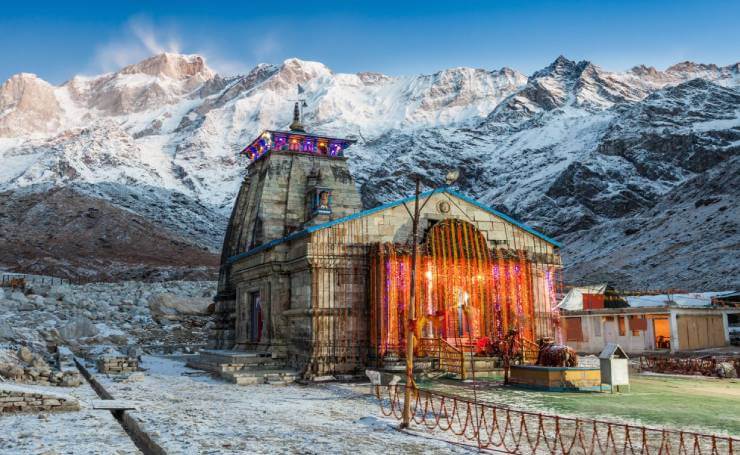
Located on the Garhwal Himalayan Range of Uttarakhand near Mandakini River, Kedarnath Temple is a highly esteemed Shiva Temple for Hindus across the world. Perched at a height of around 3583m, this Shiva shrine is counted among the four destinations of Chardham Yatra of Uttarakhand along with Yamunotri, Gangotri and Badrinath.
Kedarnath is also one of the five temples constituting the Panch Kedar and is located in Dev Bhumi Uttarakhand. Due to its high elevation, the temple receives high snowfall in winter and remains open from April end till mid November.
Other Interesting Blog to Read
Somnath Mandir, Gujarat
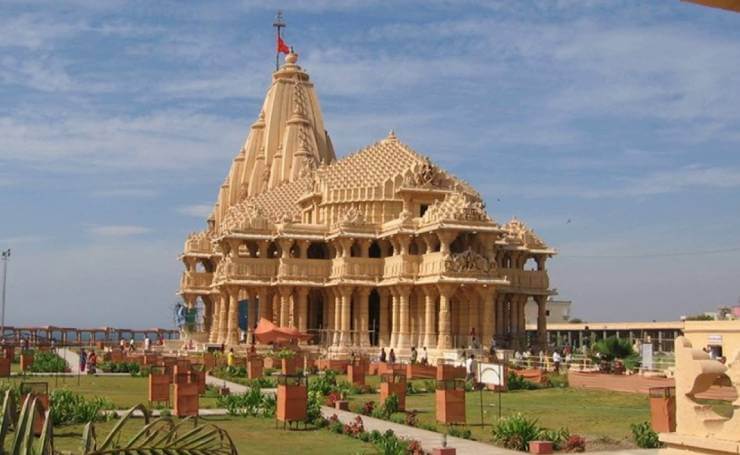
The historical temple of Somnath is located in the Prabhas Kshetra near Veraval in Saurashtra. It is one of the 12 Jyotirlinga temples dedicated to Lord Shiva and gains prestigious position among the Hindus. The temple has been a witness of severe historical incidents and has been ruined by foreign invaders for its exclusive repository of gems and jewelleries.
The recent temple of Somnath was reconstructed in 1947. The temple is constructed in Chalukya Style of architecture and built just next to the sea shore. The eye-catching part of the temple is an Arrow Pillar, known as Baan Stambh.
Other Interesting Blog to Read
Mallikarjuna Swamy Temple, Andhra Pradesh
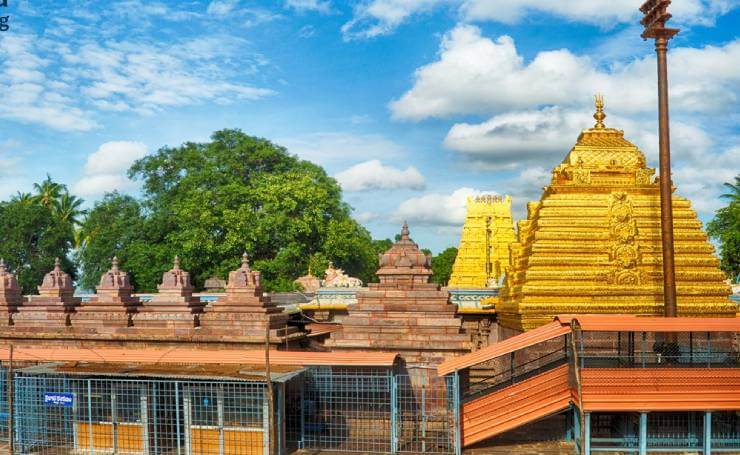
Located at Srisailam in Andhra Pradesh, Mallikarjuna Swamy Temple is yet another jyotirlinga shrine on the bank of the River Krishna. The temple has a gilded spire and looks stunning for its silverplated door and gracefully ornate pillars.
Lord Shiva is worshipped here in the form of Mallikarjun and Goddess Parvati is worshipped here as Bhadrakali. The temple of Mallikarjuna Swamy was built by King Harihara Raya of Bijayanagara kingdom about 6 centuries back, so history buffs can get enough elements to fill their knowledge bank in this temple.
Also Read: Pilgrimage Tourism in Andhra Pradesh
Mahakaleshwar Mandir, Madhya Pradesh
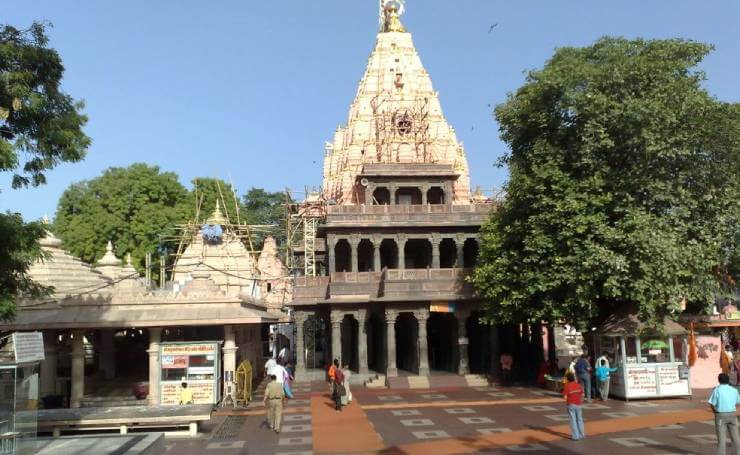
The temple of Mahakaleshwar is located in the city of Ujjain in Madhya Pradesh. The deity Mahakal is the Lord of death of all three Lokas, i.e., heaven, earth, and hades. He is considered to be the fierce form of Lord Shiva, who is the destroyer of all evils.
The presiding deity of the temple is a Swayambhu Lingam which is called Dakshinamurti. The main attraction of this Jyotirlinga Temple is the Bhasma Arati which is a must-see religious site for the devotees.
Also Check out: Madhya Pradesh Complete Tourism Guide
Omkareshwar Mandir, Madhya Pradesh
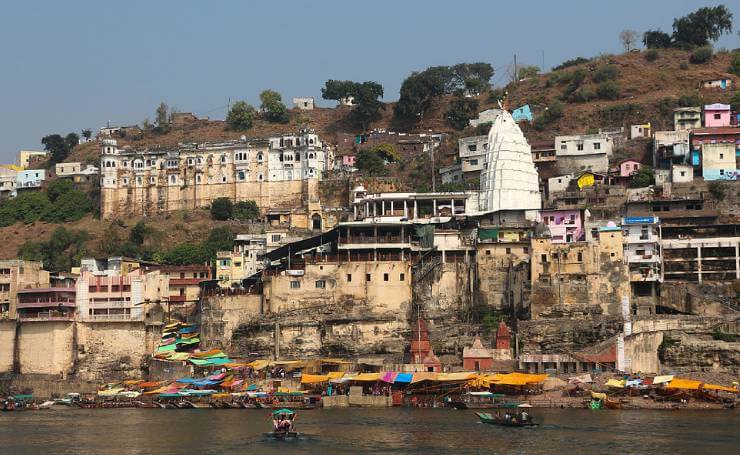
Located on an island shaped like the Hindu spiritual symbol Om, Omkareshwar Temple is situated in the Narmada river in Madhya Pradesh. One of the popular pilgrimage destinations of India, this temple is a five storeyed building that encloses the seats of different Hindu deities other than the presiding deity Lord Omkareshwar.
The deity is worshipped here three times a day by different priests instead of the same temple head performing it at all three times. The morning worship is done by the temple trust, the Puja at mid day is done by the priest of Scindia state while the evening one is performed by the priest of the Holkar state.
The idol of Lord Omkareshwar is three-headed and its appearance is backed by significant mythologies. To see the most colourful face of this temple, tourists should travel here on Monday or during Shravana, the fifth month of the Hindu calendar.
Also Read
Bhimashankar Temple, Maharashtra
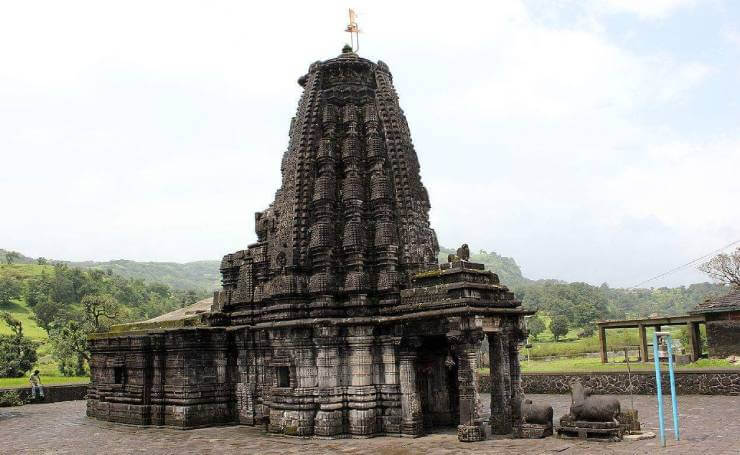
A Jyotirlinga temple located in Pune, Maharashtra, Bhimashankar Temple is found at place from where the river Bhima starts its journey. Built in Nagara architectural style, the temple depicts modest and graceful temple architecture. According to Hindu mythology, Tripurasur, a demon did penance in the deepest jungle of Bhimashankar and pleased Lord Shiva who blessed him with the gift of immortality.
He was told that he should use the blessing for the betterment of humans or else he will have to lose his life. In the course of time, he forgot the condition and started disobeying the order of the Gods. To stop his evil deeds, Lord Shiva and Goddess Parvati took a new form called Ardhanarishwara who ultimately killed Bhimashankar. It is after this incident that Bhimashankar turned into a revered religious site.
Other Interesting Blog to Read
Kashi Vishwanath Mandir, Uttar Pradesh
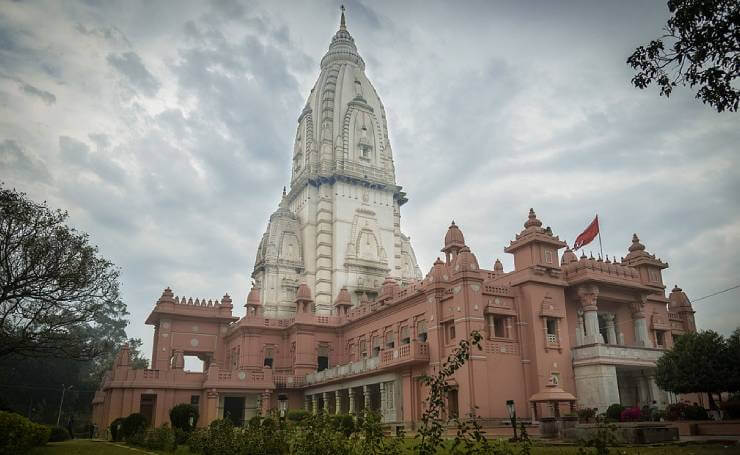
One, who takes breathes his last in Kashi Vishwanath, gets liberated from the cycle of rebirth and that is why Vishwanath, the lord of the world is the shelter of all devoted souls. The temple of Kashi Vishwanath is located in Varanasi and counted among the twelve Jyotirlingas.
Kashi Vishwanth possesses an important position in Shaivism and it is during Shiva Ratri festival that the temple gets decked in its best. It is necessary to mention here that the city of Varanasi is one of the oldest cities in the world and has high historical importance.
Check out: Popular Tourist Attractions in Varanasi
Trimbakeshwar Mandir, Maharashtra
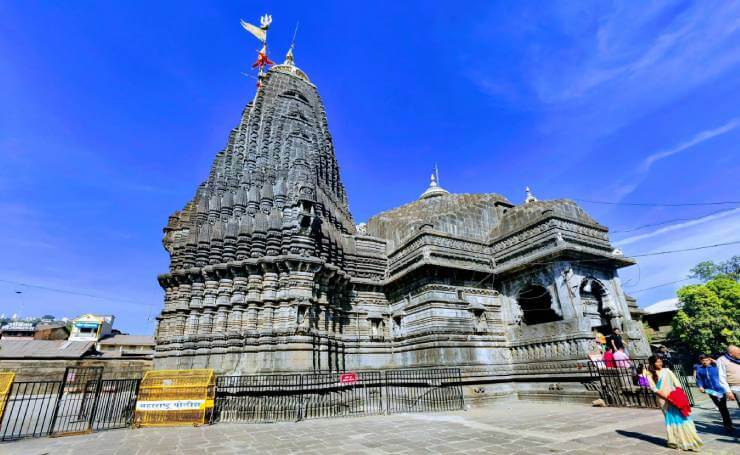
Located at a distance of around 28km from the city of Nashik, Trimbakeshwar is a Jyotirlinga Temple found at the source of Godavari River. The temple of Trimbakeshwar was believed to be built by Peshwa Balaji Baji Rao. Built in classic Hemadpanthi style, this temple is completely made of black stone and counted among the most popular Shiva temples in India.
The lingam of Shiva in the temple depicts three faces embodying Lord Vishnu, Lord Brahma and Lord Rudra. The lingas are adorned with three distinct golden crowns jaded by diamond and expensive gems.
Also Check out: Nashik Tourism Places
Vaidyanath Mandir Deoghar, Jharkhand
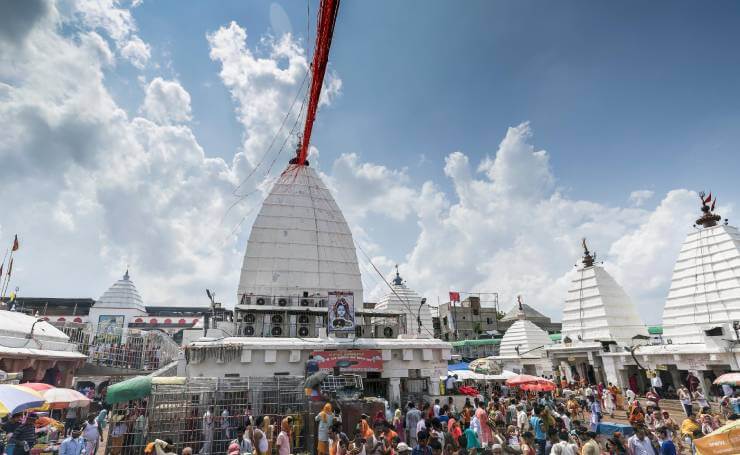
Vaidya means doctor and Nath denotes Lord, so the literal meaning of Vaidyanath is the Lord who acted as doctors. The temple has a connection with the mythological incident of Ravana who sacrificed his ten heads in a bid to please Lord Shiva. It is believed that, Shiva being pleased with Ravana’s devotion came down to Deoghar and treated the severed head of Ravana as a doctor.
Baidyanath Dham or Baba Dham is one of the Jyotirlinga Temples and located in the Santhal Parganas division of Jharkhand. The temples complex encompasses 22 temples of different heights dedicated to different deities. The antique elements seen in this temple are Punchshula, Chandrakanta Mani and obviously the lingam which is made of a unique stone.
Other Interesting Blog to Read
Nageshwar Temple Dwarka, Gujarat
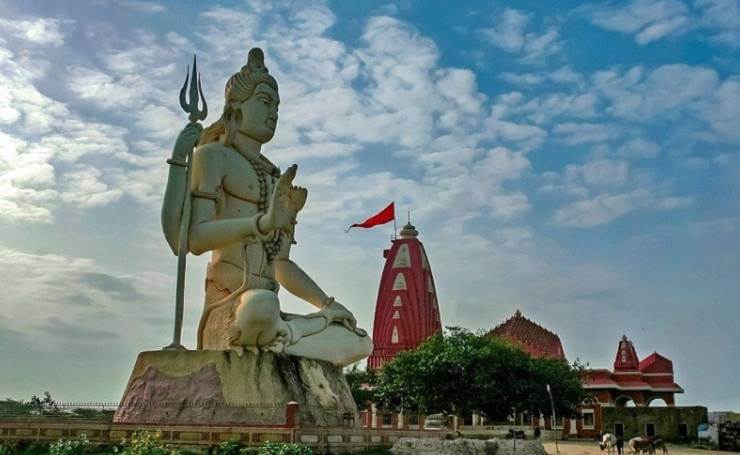
A historically enriched temple standing at the site of 5 formerly demolished cities, Nageshwar is situated on the coast of Saurshtra in Gujarat. The temple is found on the route between Dwarka city and Beyt Dwarka Island. Shiva is worshipped in Nageshwar as a Jyotirlinga and can be seen in an underground sanctum.
Other than the religious and mythological significance, the temple houses a few significant attractions like a 25 m tall statue of Lord Shiva along with a large garden with a pond. Nageshwar is described as Darukavana in ancient scriptures.
Also Read: Popular Pilgrimage Destinations in Gujarat
Ramanathaswamy Temple, Tamil Nadu
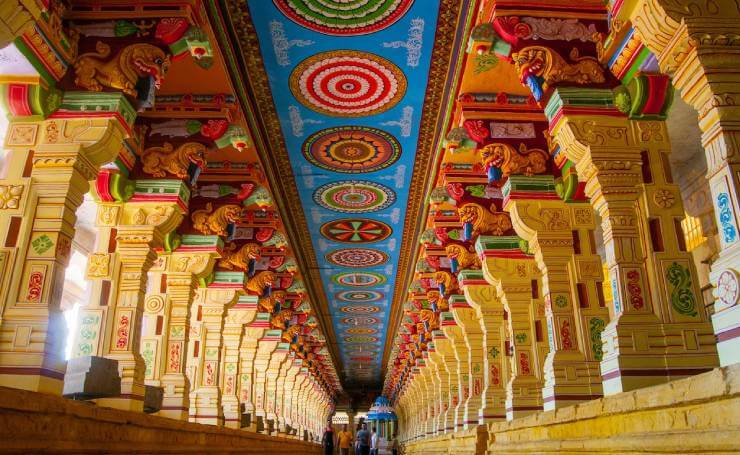
Ramanathaswamy Temple is located in an island in Tamil Nadu called Rameshwaram. Highly esteemed by the Shaivite and Vaishnavite believers, this temple was built at the same place where Lord Rama worshiped Shiva to get rid of the sin he did, killing Ravana, a Brahmin.
The temple has significant religious value and gains more importance among the lovers of art and architecture for housing the longest temple corridor in the world. It is believed that the idol of Lord Shiva (the bigger one) was originally brought from Kailash by Hanuman, the devotee of Lord Rama.
Other Interesting Blog to Read
Grishneshwar Temple, Maharashtra
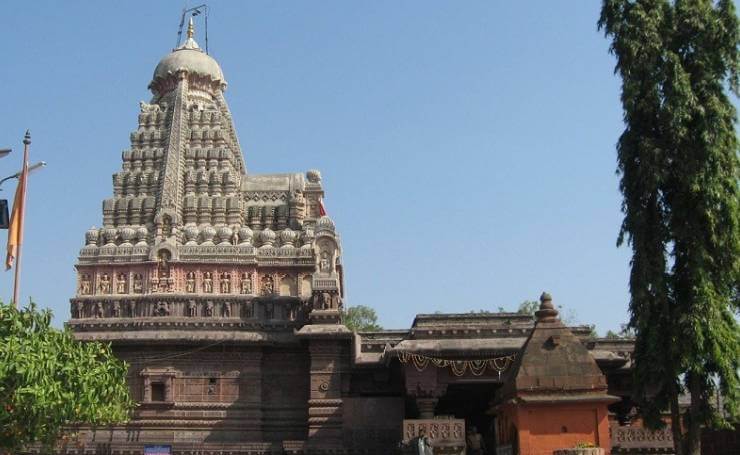
Believed to be the last Jyotirlinga temple on earth, Grishneshwar is located at a village near Daulatabad (Devgiri) called Verul. The temple is around 30 km from Aurangabad and very close to Ellora Caves. It is built of red rocks and designed in pre-historic architectural style. The temple was constructed by Ahilyabhai Holkar.
The formation of the temple is associated with a very interesting story of Shiva Puran which states the devotion of Grushma and how she got back her son who was killed by her jealous sister. The temple got its name from this incident and thus known as Ghushmeswara or Grushmeswara as well.
Also Read: Popular Pilgrimage Destinations in Maharashtra
Amarnath Temple, Jammu and Kashmir
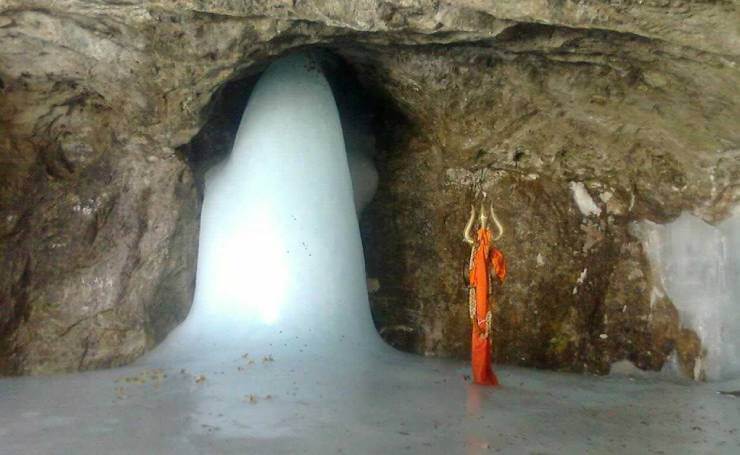
A religious tour in India that needs no introduction among the Indians, Amarnath takes spiritual tourism in India to a different level. Located in the state of Jammu and Kashmir in India, this temple is perched at a height of 3888 m in a hallowed cave known by the name of Lord Amarnath.
The main attraction of this religious site is the naturally appearing ice lingam of Lord Shiva which is formed once in a year. The Yatra leading to Amarnath is considered very pious and needs lot of physical and mental strength to complete as it passes through some of the rugged terrains of Kashmir and one needs to walk long way.
Also Check out: Jammu and Kashmir Tourism Guide
Brihadeswarar Temple, Tamil Nadu
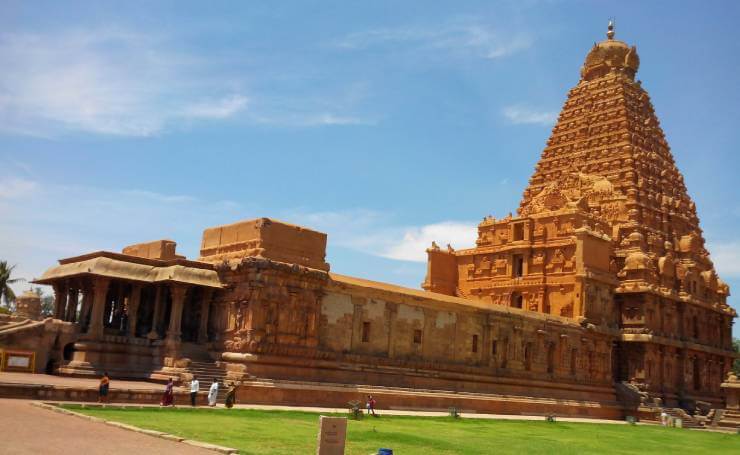
Located in Thanjavur (Tanjore), Brihadeshwara Temple is a UNESCO World Heritage Site built by Raja Raj Chola. The greatest example of Dravidian style of Temple Architecture, Brihadeeswarar Temple adorns the vimanam (temple tower) which is considered to be one of the highest temple towers in the world.
The temple of Brihadeeswarar encloses a giant statue of Nandi which is carved out of a single rock. The presiding deity of the temple is Lord Mahadev while the exterior of the temple enshrines the images of other popular deities such as Dakshinamurthy, Surya and Chandra. It is one of those temples where the statues of Ashta Dikapalas are found.
Other Interesting Blog to Read
Shore Temple, Tamil Nadu
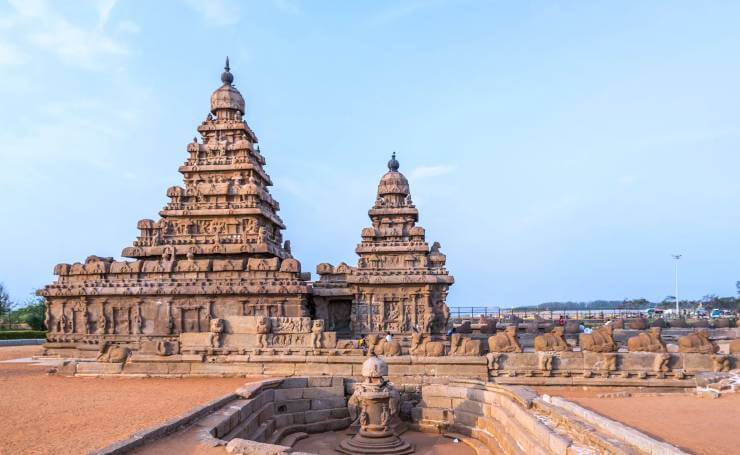
Located on the shore of Bay of Bengal in Mahabalipuram, Shore Temple is a specimen of the temple style of 8th Century AD. Built of huge blocks of granite, the temple constitutes a significant part of the temple complex of Mahabalipuram and has been enlisted as a UNESCO World Heritage Site.
It is also one of the oldest stone temples of South India. The presiding deity of the temple is Lord Shiva, though one can see a huge statue of Lord Vishnu in reclining position in the temple complex. So, the travellers trying to taste the architectural genius of South India should go and visit this temple.
Also Read: Mahabalipuram Tourism Information
Lingaraj Temple, Odisha
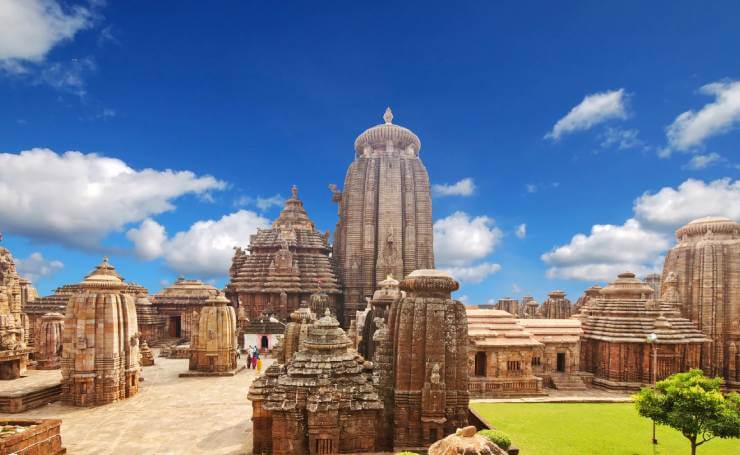
An exclusive specimen of Kalinga Architectural Style, Lingaraj Temple should be added to the list of must see temples in India for the exclusive work of art it depicts. Dedicated to Lord Harihara, an incarnation of Lord Shiva, the temple is believed to be constructed by the kings of Somavamsi dynasty and later modified the rulers of Ganga Dynasty.
The temple is made of sandstone and laterite and is surrounded by several other small shrines dedicated to other deities. Shiva is worshipped here as Tribhuvaneshwara and his consort is worshipped as Bhubaneshwari. Lingaraj Temple is one of the oldest temples in Bhubaneshwar city of Odisha.
Other Interesting Blog to Read
Kotilingeshwara Temple, Karnataka
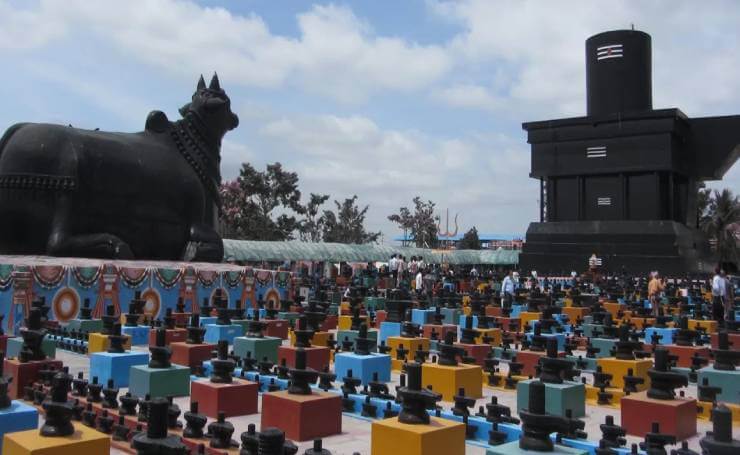
Literally the temple of around one crore number of Shivalingam, the Kotilingeshwara Temple is located in Kammasandra village of Kolar district. The main attraction of this temple is the huge Shiva Lingam which is around 33m tall. Nandi, the mount of Lord Shiva is around 11m tall. The Shiva Lingam found in this temple is counted among the highest known Shiva Lingams in the world.
Other Interesting Blog to Read
Daksheswara Mahadev Temple Haridwar, Uttarakhand
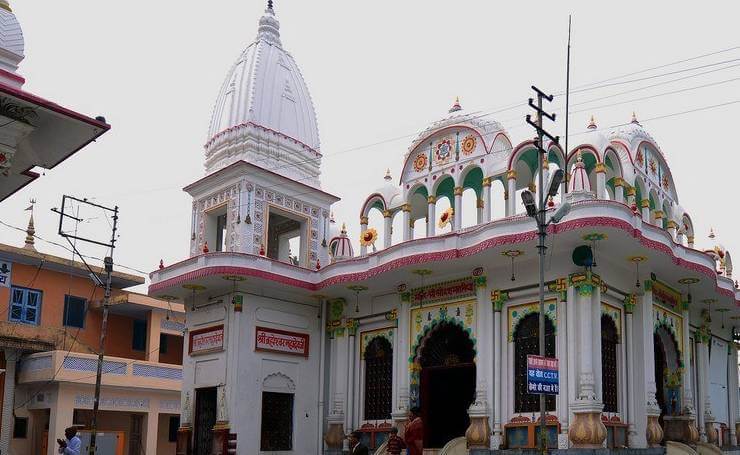
About 4 km from Haridwar, Kankhal, a small town is famed for its temple of Daksheswara Mahadev. The temple is named after Daksha Prajapati who was the father of Devi Sati, an incarnation of Goddess Durga.
The temple was mainly constructed by Queen Dhankaur in 1810 and later renovated in 1962. The temple is designed in Nagara Style. Maha Shivratri is the best time to see the vibrant face of this temple.
Also Check out: Complete Haridwar Travel Guide
Annamalaiyar Temple, Tamil Nadu
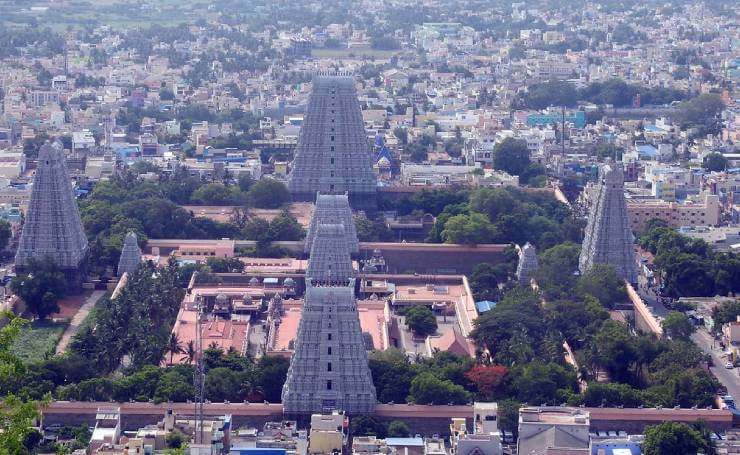
One of the Pancha Bhuta Sthalas, found at the base of Annamalai Hills in Thiruvannamalai, Annamalaiyar Temple is a famous religious spot for Shaivites. The temple complex covers a huge area and is known in the country for its giant size and lofty height. The temple has been the inspiration behind many Tamil religious scriptures. Annamalaiyar temple has four gateway towers known as Gopurams.
The construction of the temple mainly took place during the days of Chola rulers and was later renovated by the rulers of the Saluva and Tuluva Dynasty. The temple witnesses five rituals in a day and if you want to see the most happening sight of this temple, then you should come here during Karthigai Deepam festival.
Other Interesting Blog to Read
Tarakeshwar Temple, West Bengal
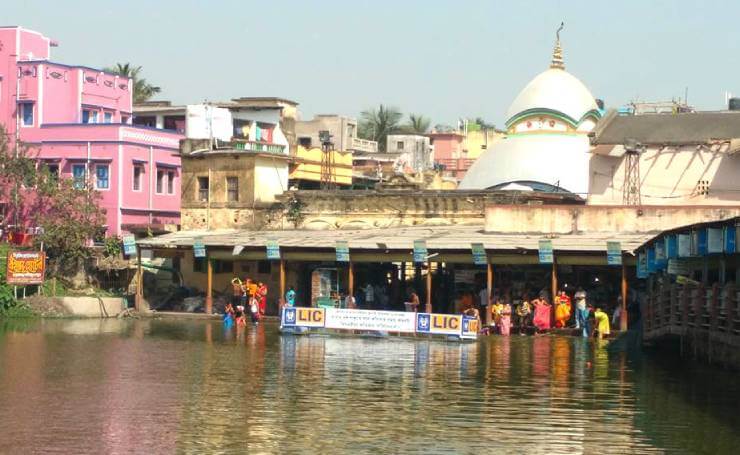
Associated with hundreds of deep rooted religious beliefs of the Hindu devotees of West Bengal, Tarakeshwar is located in Hooghly District. The presiding deity of the temple is Shiva who is believed to be the rescuer of all religious souls. It is believed that the actual lingam which is worshipped in this temple was found in a jungle by the mendicant brother of Raja Vishnu Das.
The temple as is visible today was built by Raja Vishnu Das who was instructed in his dreams by Lord Shiva to build it. It is believed that people who do fast in this temple without taking even water surely get their wish fulfilled by Tarak Nath.
Also Read: Pilgrimage Tourism in West Bengal
Murudeshwara Temple, Karnataka
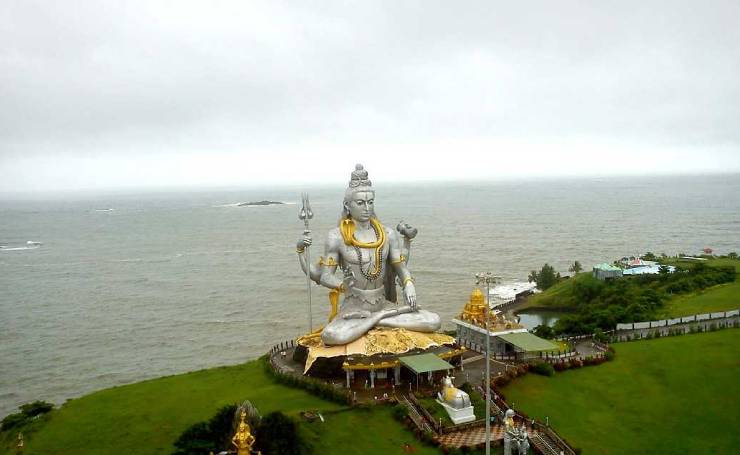
The temple of Murudeshwara is located in Bhatkal Taluk of Uttara Kannada district of Karnataka. Located at a hill top which is surrounded by the water of the Arabian Sea, the temple is a 20 storied building.
The temple houses the second tallest statue of Lord Shiva in the world which spreads an enigmatic aura in the evening during sun set. The statue is around 37 m tall and it is estimated that it took around 2 years to build this statue.
Also Read: Popular Pilgrimage Destinations in Karnataka
Vadakkunnathan Temple, Kerala
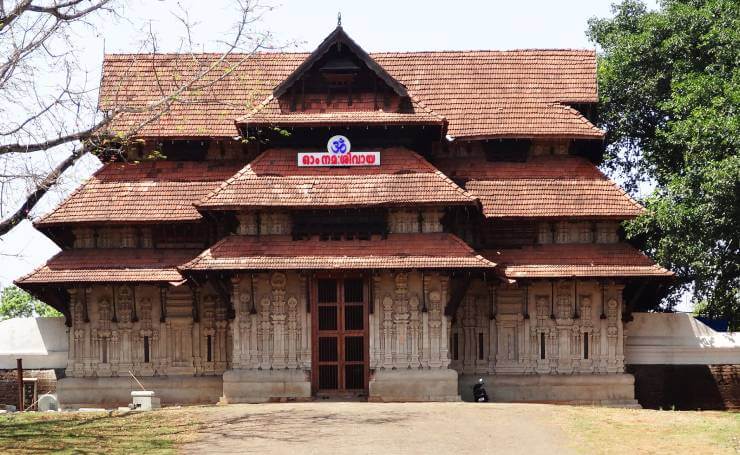
Located in Thrissur city of Kerala, the temple of Vadakkunnathan is a popular Shiva temple in South India. Lord Shiva is known here as Vadakkunnathan. It is believed that the temple of Vadakkunnathan is the first temple to be built by Lord Parshurama.
The idol of Lord Shiva is worshipped here every day by offering a huge amount of Ghee. As a result, today the devotees can see here a huge mound of Ghee instead of a proper Lingam. The ghee that is used for daily Abhishekam of Lord Shiva is later given to the devotees to take back home as Prasadam.
Other Interesting Blog to Read
Bhavnath Mahadev Temple
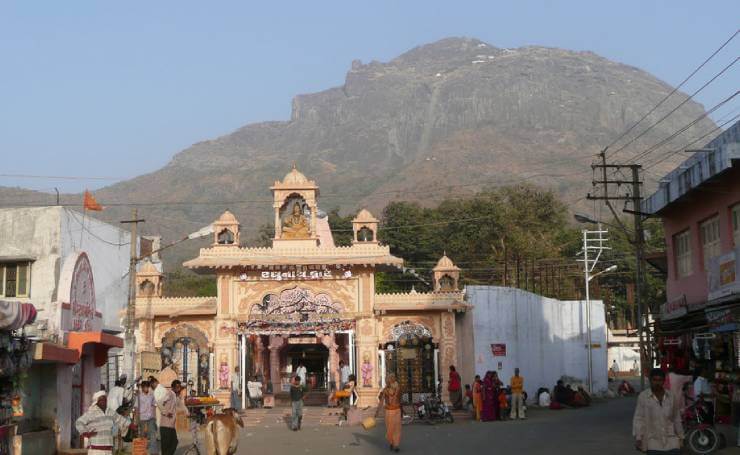
A temple that takes you on a tour of ancient India, Bhavnath Mahadev temple is located in Junagadh district of Gujarat. Located at the base of Girnar Hills, the temple is a revered pilgrimage spot for Hindus as well as Jains.
The best attraction of this temple is the Bhavnath Fair that is mostly held in the month of January-February. Try being a part of this festival and you will be blessed with the presence of Naga Sadhus.
Other Interesting Blog to Read
Srikalahasti Temple, Andhra Pradesh
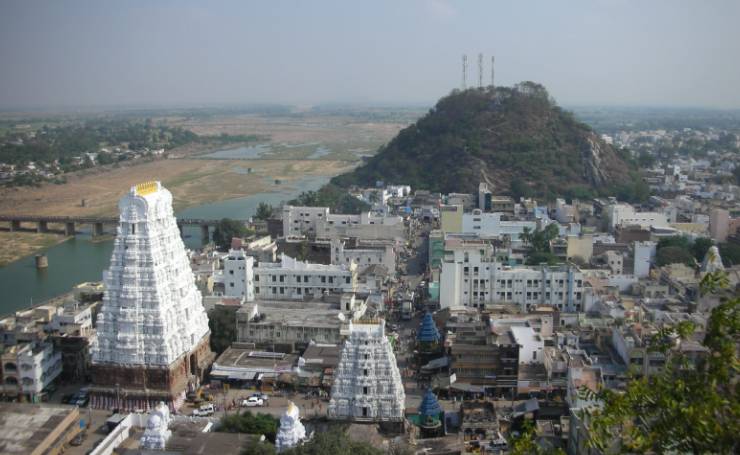
Associated with the myth of Kannapa’s sacrifice of his eyes, Srikalahasti Temple is located in Chittoor district of Andhra Pradesh. The temple is considered amongst the Pancha Bhuta Sthalas and Lord Shiva is worshiped here as Kalahasteeswara.
The temple was constructed in the 12th Century by Chola and Vijayangara Kings. The temple is considered as the Kailash of the South. The white lingam worshipped in this temple is considered to be a Swayambhu or self-manifested lingam.
Other Interesting Blog to Read
Kandariya Mahadeva Temple, Madhya Pradesh
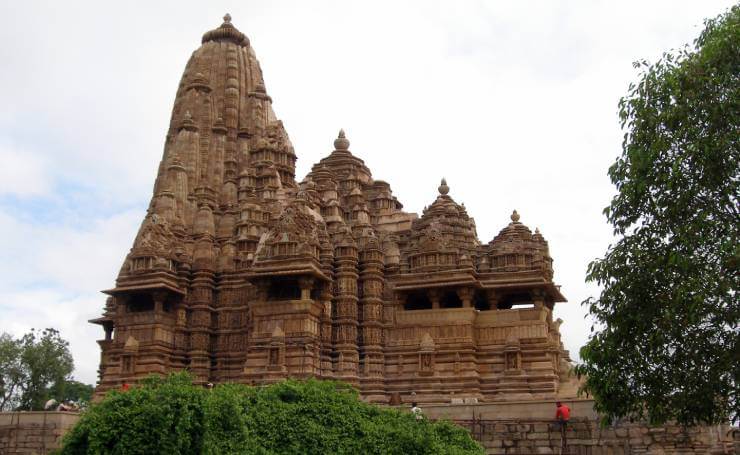
Located in the temple complex of the famous Khajuraho temple of Madhya Pradesh, Kandariya Mahadeva Temple stands apart from the popular Shiva Temples that are found across the country. The temple attracts attention of the travellers for the detailed carvings in its walls.
There are around 900 sculptures inside and outside the temple. The prominent carvings include the images of a dancing Chamunda and the images of Birabhadra. For the people who are fond of exploring temple architecture, the shrine of Kandariya Mahadev is a delight.
Other Interesting Blog to Read
Tungnath Temple, Uttarakhand
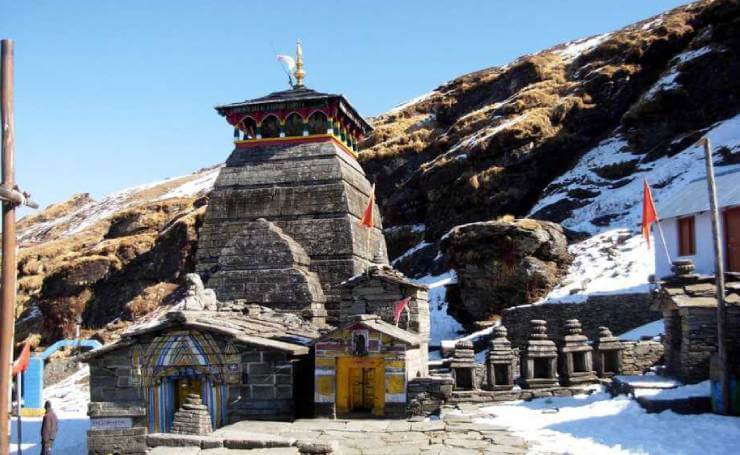
An ideal pick for the devotees who are equally dedicated to adventure activities, the temple of Tungnath is the highest known Shiva Temple in the world. Located at a height of around 3680m in Rudraprayag District of Uttarakhand, this temple is located at the base of Chandrashila Peak. Trekkers irrespective of their religion walk through this temple to reach at Chandrashila Peak.
The temple of Tungnath is one of the Panch Kedar Temples of Uttarakhand and thus holds great significance among the Hindus. Vinayak Chaturthi and Deepawali festival are celebrated during September-October.
Also Read: Popular Religious Tourist Destinations in Uttarakhand
Chidamabaram Nataraja Temple, Tamil Nadu
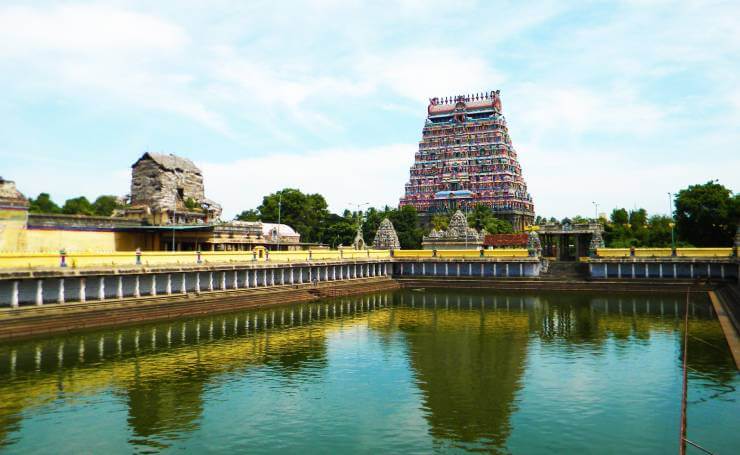
Located in Chidambaram Town of Tamil Nadu, Chidambaram Natarajar Temple is an artistically enriched shrine dedicated to Lord Shiva. The literal meaning of Chidambaram is the sky of conscious and refers to a very deep concept of Hindu beliefs. The temple is also known as Thillai Nataraja Temple and considered as one of the Pancha Bhuta Sthalams.
The presiding deity of the temple is Nataraja, Shiva, or Thillai Kothan. The temple has been renovated by the dynasties like Pallava, Chola, Pandya, Vijayanagara and Chera from time to time and thus gives a brief idea about the architectural development happened during their reigns.
Other Interesting Blog to Read
Jambukeswarar Temple, Trichy, Tamil Nadu
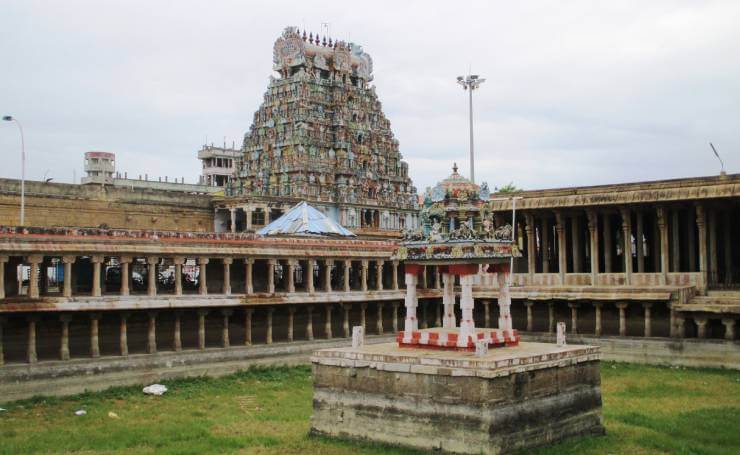
Popularly known as Thiruvanaikaval or Jambukeswaram Temple, Jambukeswarar is a Shiva Shrine in Srirangam Island of Tamil Nadu. It is one of the five temples that constitute Pancha Bhuta Sthalam. Shiva is worshipped here with his consort Parvati, who is known as Akilandeswari.
The main attraction of this temple is the Shiva Lingam that spouts non-stop trickles of water. Built around the 2nd century AD, the temple is a perfect example of Dravidian style architectural. For people who would love to explore historical elements, the temple contains inscription from the Chola Period.
Other Interesting Blog to Read
Koteshwar Mahadev Temple Rudraprayag, Uttarakhand
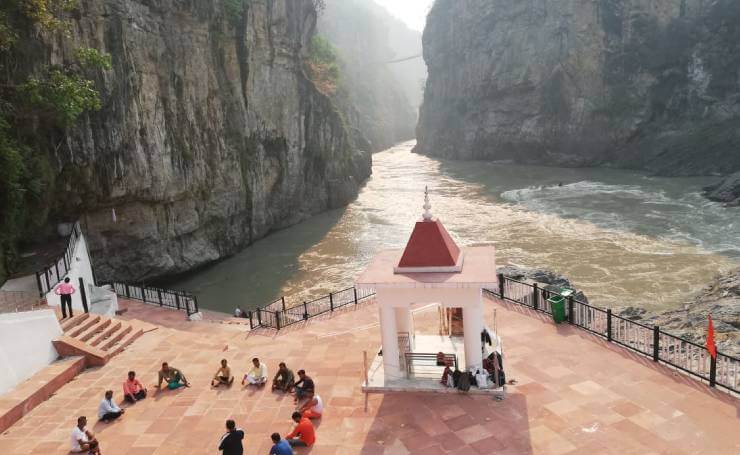
Located at a distance of around 3km from Rudraprayag is the Koteshwar Mahadev Temple, which is a cave temple where Lord Shiva meditated before he arrived at Kedarnath.
The temple is located on the bank of the river Alaknanda. There are several idols of deities in this cave temple which are considered to be naturally formed.
Other Interesting Blog to Read
Bhojeshwar Shiva Temple, Madhya Pradesh
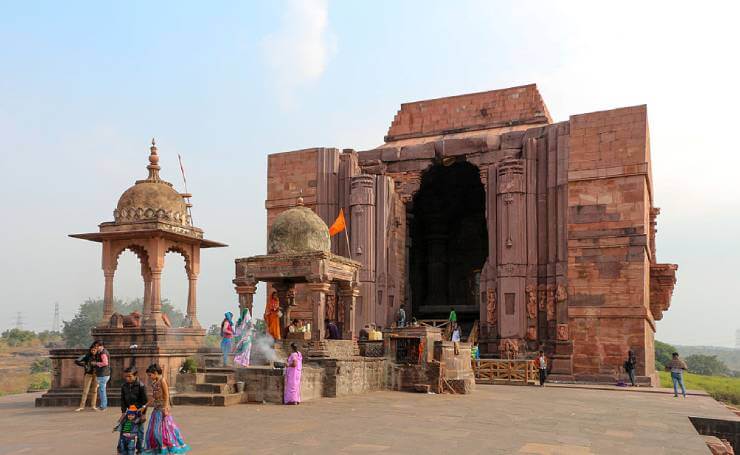
Located on the bank of river Betwa in the Raisen District of Madhya Pradesh, Bhojpur Shiva Temple is an ancient temple dedicated to Lord Shiva. The temple is famous for its incomplete construction and known for the huge Shiva Lingam which is carved of a single rock.
The Shiva Lingam is around 5.5m tall and counted among the tallest Shiva Lingas in the country. The reason behind the incomplete structure of this temple is unknown.
Other Interesting Blog to Read
Kailashnath Temple, Maharashtra
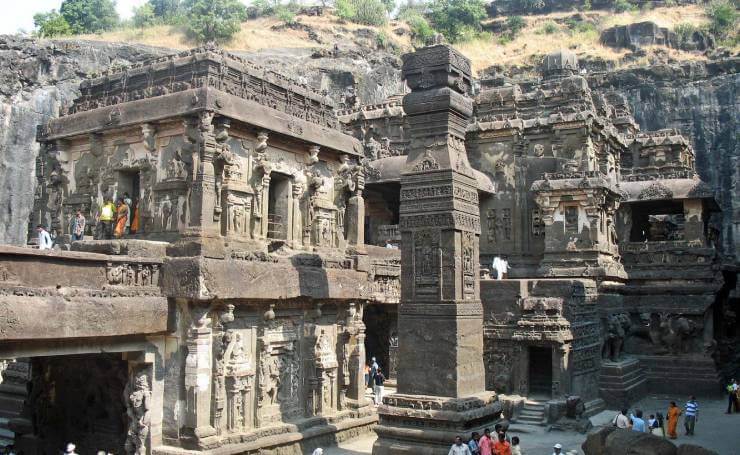
The finest example of the Rashtrakuta architecture, Kailashnath Temple is situated at Ellora, near Aurangabad. It is a rock cut temple, comprised of four different parts. The temple is a part of 34 temples forming a group called Ellora Caves. It is a megalith structure and was built around the 8th century by the Rashtrakuta ruler.
The temple resembles the construction style of the temples at Pattadakal. Experts opine that most of the South Indian temples built in the later years have taken inspiration from the architectural design of this temple.
Other Interesting Blogs to Read
Like & Follow our social media accounts at Twitter, Facebook, Linkedin & Instagram for getting the latest updates & offers on holiday packages.
Disclaimer: We do not take credit for some of the licenced paid images used in our blogs, whether from Google Images, Fotolia & Shutterstock. All such images are the copyrights of their respective owners and we try to provide credit for them wherever we can. If, however, any copyright image has been used on our blog, the concerned person can either mail us directly to remove the image or provide credit to whomsoever the image may belong to.
Frequently Asked Questions
Q.What are the names of the 12 Jyotirlingas?
The names of 12 Jyotirlingas temples of Lord Shiva in India are:
- Somnath
- Nageshwar
- Bhimashankar
- Trimbakeshwar
- Grishneshwar
- Vaidyanath
- Mahakaleshwar
- Omkareshwar
- Kashi Vishwanath
- Kedarnath
- Rameshwaram
- Mallikarjuna
Q.What are the names of Panch Kedar temples?
The Panch Kedar temples are:
- Madhmaheshwar
- Tungnath
- Rudranath
- Kalpnath
- Kedarnath
About the author
Rahul Srivastava is an ardent travel writer who is born and brought up in the City of Nawabs- Lucknow. Being from to the culturally thriving land, he has a deep interest in discovering different hues of the country. He has travelled scores of places in India, and holds an affluent experience and knowledge about them. He loves to pen down his travel experiences and his quest for travelling new places is marked evidently in his blogs. His write-ups are the perfect reflection of his fervor for exploring the unexplored!

 +91-9212777225
+91-9212777225 Plan Your trip
Plan Your trip